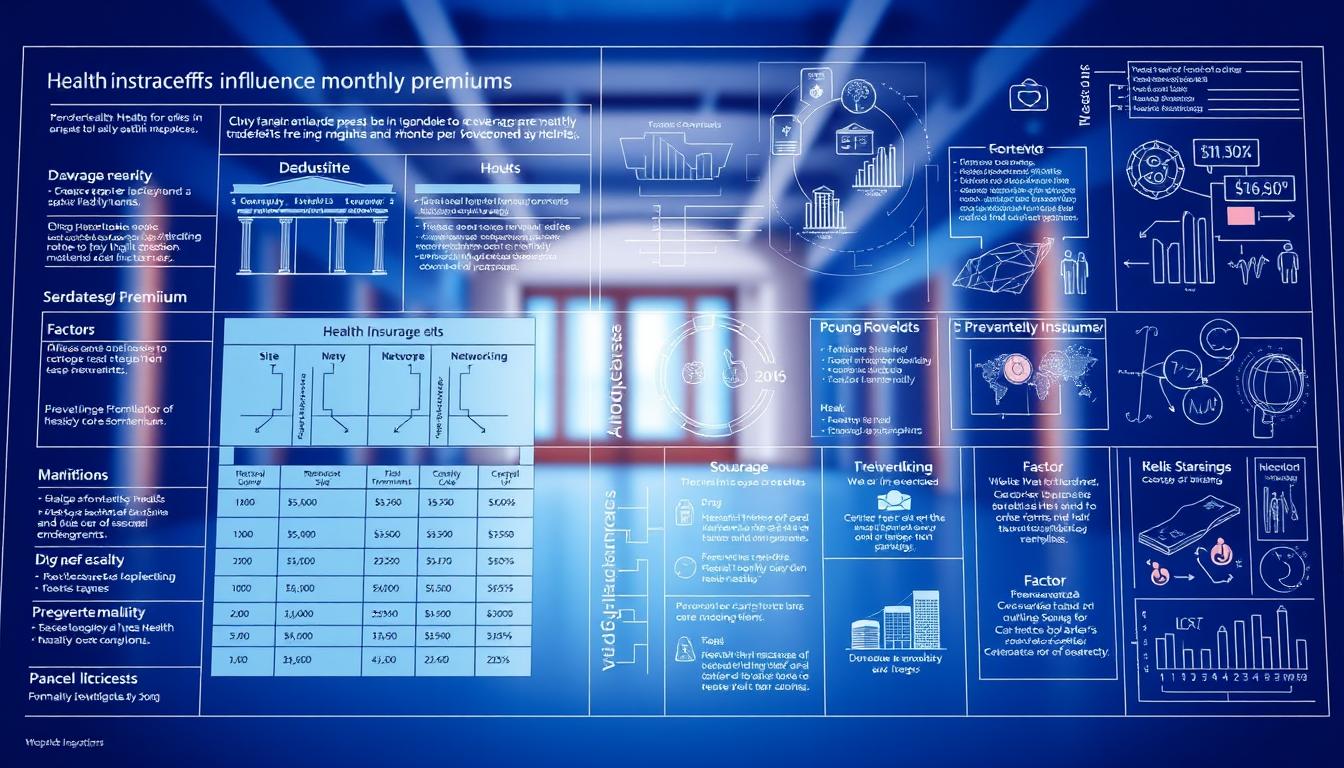You may have felt a knot in your stomach when a bill arrived or an enrollment deadline loomed. That tug is normal — plans, costs, and timing shape how much you pay and how protected you feel.
A premium is the recurring dollar amount you pay to keep coverage active. Most people pay monthly, though some pay quarterly or yearly. Insurers often require the first payment before a plan starts, so budgeting matters.
Choosing a plan means balancing lower monthly prices against higher out-of-pocket costs later. Many companies offer discounts for auto-pay or paying the full amount up front.
Whether you enroll through work or the marketplace affects tax savings, billing, and how insurance premiums fit into your budget. Keep paperwork and reminders organized so payments don’t lapse and you avoid gaps in health coverage.
Key Takeaways
- Premiums are recurring payments that keep your plan active.
- Lower monthly premiums often mean higher costs when you use care.
- First-month payment usually is required before coverage begins.
- Auto-pay, paperless billing, or upfront payment can reduce what you pay.
- Compare total annual costs — not just the sticker premium — when choosing coverage.
Start Here: What a Premium Is and Why It Matters Right Now
A recurring monthly charge keeps a plan active so you can get care when needed. This payment is the basic cost that preserves coverage and gives you access to covered services.
Most people pay each month, and insurers usually require the first payment before a policy becomes effective. You can pay by bank draft, card, check, or money order. Many companies lower rates for auto-pay or paperless billing.
If you buy on the marketplace or from a private firm, you pay the insurance company directly. If you enroll through work, your share typically comes out of payroll before tax. That reduces taxable income and can lower your take-home cost.
- Think beyond the monthly number: total expenses include deductible, coinsurance, and copayments.
- Set up auto-pay to avoid missed payments and lapses in coverage.
- Check billing schedules—monthly, quarterly, or annual—so you can budget.
- If eligible, marketplace tax credits can reduce monthly premiums right away.

What Determines Your Health Insurance Premium
Insurers set monthly rates using only a handful of regulated criteria. These rules shape how much people pay and which plans fit best.
Age: The ACA uses a three-to-one rating band, so older adults can be charged up to three times what a 21-year-old pays. That makes your age bracket a major factor when premiums are calculated.

Location: ZIP-code differences in medical costs and market competition change rates. Two nearby towns can show very different premiums for similar coverage.
Tobacco use: Insurers may add a surcharge—up to about 50%—so quitting can lower costs as well as improve health.
- Family vs. self-only: Adding a spouse or dependents raises what you pay each month compared with self-only enrollment.
- Plan category: Bronze and silver usually have lower premiums and higher out-of-pocket costs; gold and platinum reverse that trade-off.
- Protections: Under the ACA, companies cannot charge more for pre-existing conditions or vary rates by gender for the same plan.
Match your expected care needs to coinsurance, copays, and deductible levels rather than choosing the lowest sticker premium alone.
Where You Buy Coverage Changes Pricing Dynamics
The channel you use to buy a plan affects how rates are set and what help is available.
Traditional employer group plans
Large-group offerings often pool many workers. Companies may share costs pre-tax and negotiate with insurers. Renewals can reflect the group’s average age, participation, location, plan type, family enrollment, and prior claims.
Small-group (including SHOP) follows ACA rating limits: age, family size, location, tobacco use, and plan type. Insurers cannot raise rates for industry or past claims in this market.
On-exchange marketplace plans
On-exchange plans are ACA-compliant and can qualify you for premium tax credits when income fits the rules. That subsidy can lower monthly costs substantially.
Off-exchange and supplemental options
Off-exchange ACA plans use the same rating factors as marketplace plans but do not offer subsidies. Supplemental products—dental, vision, or certain catastrophic add-ons—may price differently and follow other rules.
“Review where you shop each year; channels and carrier networks change and can affect what you pay.”
| Channel | Key rating factors | Subsidy access | Employer role |
|---|---|---|---|
| Large-group employer | Average age, participation, claims, location | No | Often shares cost, pre-tax payroll |
| Small-group / SHOP | Age, family size, location, tobacco use, plan type | No | Employer shares; limited rating rules |
| On-exchange individual | Age, location, tobacco, family size, plan type | Yes, if income eligible | Not applicable |
| Off-exchange & supplemental | Same ACA factors for ACA plans; supplemental may vary | No for off-exchange | Not applicable |

How Insurers Calculate Premiums Behind the Scenes
Under the hood, carriers blend data and judgment to turn past claims into future price tags. This process balances projected care use, local price trends, and company expenses so plans stay solvent while remaining competitive.
Risk pools and actuarial forecasting
Risk pooling spreads expected claims across many members. Actuaries use historical claims, trend lines, and probability models to estimate what a group will cost next year.
Utilization and regional medical cost trends
When people use more care—visits, tests, or pricey therapies—projected claims rise and raise premiums. Local hospital and specialist rates also push costs up or down by ZIP code.
Administrative expenses and insurer margin
Marketing, billing, claims processing, and customer service are built into prices. Insurers add a margin to preserve solvency and cover unexpected swings in claims.
Regulatory oversight and essential benefits
The ACA requires coverage of core benefits and limits medical underwriting in small markets. State departments review and often approve proposed rates before they take effect.
Market competition and network design
More carriers in a region usually mean more moderate pricing. Broader provider networks and out-of-network access cost more, while narrow networks can lower monthly costs.
| Factor | How it affects rates | Typical impact |
|---|---|---|
| Risk pool makeup | Age, enrollment size, prior claims | High |
| Utilization trends | Frequency of visits and expensive treatments | High |
| Regional medical costs | Local hospital and specialist pricing | Medium to High |
| Administrative costs & margin | Operational expenses and profit buffer | Medium |
| Competition & network | Carrier count and breadth of provider network | Low to Medium |

Plan Design Tradeoffs That Raise or Lower Your Monthly Premium
Small tweaks to deductibles, copays, and network rules can change your yearly cost a lot.
Deductibles
Higher deductibles usually mean lower monthly premiums. If you expect little care, a larger deductible trims premium costs. If you use care often, a lower deductible raises the monthly amount but cuts point-of-care spending.
Coinsurance and copayments
Coinsurance and copayments shift expenses between premium and the moment you get care. Higher coinsurance lowers the monthly charge but increases pocket costs when you use services.
Metal tiers and catastrophic plans
Bronze and silver fit people who expect modest use and want lower premiums. Gold and platinum suit those who need predictable out-of-pocket expenses. Catastrophic plans offer very low premiums with very high exposure and are mainly for those under 30 or with exemptions.
Networks and referrals
HMOs usually cost less because they limit networks and require referrals. PPOs cost more but give broader access and out-of-network options.
HDHPs and HSAs
Pairing a high-deductible health plan with an HSA can lower premium payments and provide tax-advantaged savings for qualified care.
Tip: Run a simple annual projection of premium, deductible, coinsurance, copays, and max out-of-pocket to find the best match for your needs.

Practical Ways to Lower Your Premiums in the United States
A few targeted moves can cut what you pay without sacrificing needed care. Start by checking marketplace subsidies and employer tools. Small changes add up fast.
Use marketplace tax help
Premium tax credits can lower monthly bills if your income fits federal guidelines. Take credits in advance to reduce monthly costs now. If you qualify, cost-sharing reductions on silver plans also shrink out-of-pocket expenses when you get care.
Tap employer HRAs and stipends
Ask if your employer offers QSEHRA or ICHRA; these reimburse individual policy premiums tax-free when rules apply. Integrated HRAs usually cover out-of-pocket expenses, not the premium itself.
Health stipends are taxable to employees but flexible. They won’t normally block marketplace subsidies if you remain eligible.
Stack discounts and right-size your plan
- Enroll in auto-pay and paperless billing and join wellness incentives when offered; companies and insurers often lower rates for participation.
- Choose a metal level, network, and add-ons that match expected use—bronze HDHP plus an HSA can suit low-utilization individuals and cut the premium.
- Compare insurance plans each renewal, focusing on total annual costs (monthly charge plus expected pocket costs).

Paying and Keeping Coverage Active
A reliable payment routine is the easiest way to prevent gaps in coverage. Set a method that fits your budget and check how you must pay when you enroll.
How and where you pay
If you buy on the marketplace or a private exchange, you send the amount directly to the insurance company by digital payment, bank draft, check, or money order.
If you enroll through an employer, your share is usually taken from payroll on a pre-tax basis, which can lower taxable income.
Avoiding lapses and timing
Most companies require the first month’s premium before coverage begins. Missing payments can trigger a grace period and, if not fixed, termination.
Track open enrollment dates and use special enrollment after qualifying life events so you don’t face gaps.
“Pay on time, keep contact details current, and save confirmations—those steps protect coverage and speed resolution if a payment fails.”
- Confirm payment channel: insurer direct or payroll deductions.
- Set up auto-pay and keep bank and email info updated.
- Keep receipts and confirmation numbers for each transaction.
- Review renewal notices for any changes in employer contributions or monthly premiums.
- Consider tax credits when planning payments to avoid surprises at year-end.
Conclusion
In short, smart choices about plan features and where you buy coverage shape long-term costs.
Key takeaway: ACA rules limit rating to age, location, tobacco status, family size, and plan category, while barring medical underwriting and gender rating. That framework helps individuals compare options more fairly.
Use marketplace tax credits, employer HRAs or stipends, and discounts like auto-pay to lower what you pay. Balance lower monthly bills against higher point-of-care costs by checking deductibles, coinsurance, and networks.
Pay on time, confirm billing with insurers or the insurance company, and review choices at renewal. Stay proactive so coverage and premiums match your needs and budget.